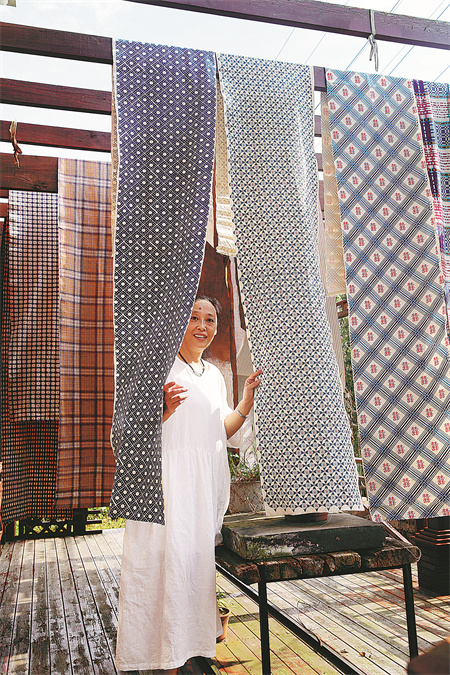

While many companies have been leveraging technology to create new fabrics customized for all kinds of scenarios in the modern age, a small group of women in Shanghai has been doing the exact opposite with their valiant endeavors to revive the popularity of an ancient cloth-Chongming homespun, also known as tubu.
Listed as a city-level intangible cultural heritage, this fabric has a history of about 600 years and used to be one of the biggest products of Chongming island, which is located at the mouth of the Yangtze River about an hour's drive from downtown Shanghai.
At its peak, Chongming's homespun industry had 130,000 looms and manufactured related products that were sold around China and in South Asia.
"Almost every local woman, aged over 50, on the island knows how to work a loom. It was a must-have skill in the past," says He Yongdi, an inheritor of the technique behind the fabric and one of the women involved in the revival project.
Fascinated by the craft since her childhood days, He started collecting the homespun fabric since 2000. She would even travel around the island on her bicycle, visiting the homes of residents and interviewing them about the history of the textile.
"Almost every family had dozens of rolls of the fabric just sitting around in their closets," she recalls.
The oldest piece in her collection dates to around the 18th century, but it is still in good condition as most people on the island have a habit of sunning the fabrics to prevent degradation caused by high levels of moisture in the sea air.
Locals store their fabrics in camphorwood chests to prevent damage caused by moths and moisture.
Over the decades, He has amassed a collection of 36 metric tons of Chongming fabrics that feature more than 12,800 patterns.
In 2015, she built a three-story house in her village just to exhibit her collection.
What makes the homespun stand out from other textiles, says He, is its rich patterns, created through a complex weaving process that can generate countless permutations, ensuring that nearly every piece produced is different.